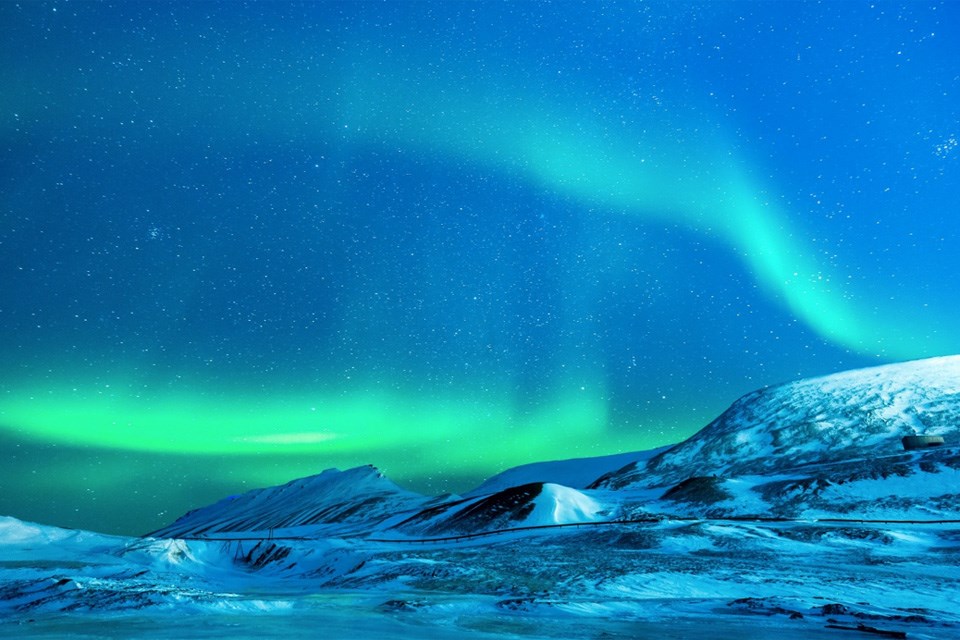It turns out that Galileo’s intuition to associate these phenomena with divine beings stems from a very ancient Pagan tradition. The Inuit peoples describe the Northern Lights as divine spirits playing ball with a Walrus’s head. Viking folklore says that they are what can be seen by mortal man when light reflects off of the armour of the Valkyrie – the female spirit guides responsible for taking fallen warriors into the afterlife.
Up in the Cosmos
The Northern Lights are an astronomical phenomenon that occurs when solar wind interacts with the Earth’s magnetic field or, magnetosphere. Fragments of sub-atomic particles emitted by the sun collide with the magnetosphere, and are redirected toward the Earth’s poles, due to their strong magnetic pull. Interestingly, the magnetosphere becomes very thin in regions farthest from the equator.
This means that when some of the deflected sub-atomic particles are travelling toward Earth’s magnetic poles, they will skim through the very thin layer of magnetosphere and make contact with the outer layers of Earth’s atmosphere. When this happens, the sub-atomic particles collide with the gaseous atoms suspended in the outer atmosphere. These collisions generate a mosaic barrage of colours that we call the Northern Lights.
The colours that are seen by the naked eye depend on the type of sub-atomic particle and gaseous ion that are colliding together at that exact moment, and how deep into the atmosphere the sub-atomic particle makes it before the collision happens. When oxygen ions collide with sub-atomic particles at high altitude (not very far into the atmosphere), a red light is emitted.
At lower altitudes (farther into the atmosphere) this same collision will appear yellow, and at the lowest altitudes, green. Nitrogen ions colliding at higher altitudes appear blue and become more purple at lower altitudes. This is because the Earth’s atmosphere acts as a prism, where there is a truncated spectrum of colours contained within each type of atomic collision (i.e. nitrogen, oxygen) and the colour that comes out depends on the angle the prism makes (the altitude) with the ray. Some people call this the “rainbow effect.”
Going to see the Northern Lights
Getting a decent view of the Northern Lights is tricky because you need two things, in addition to being located in the north: altitude above sea level and remoteness. There are many northern spots high above sea level (i.e. Calgary, Denver) to name a couple. The problem with these is that they are not remote enough. Urbanization has caused a great deal of light pollution; excess light from cities and towns that interfere with getting a good sight of the stars.
In Alberta, the best way to get away from light pollution is to avoid the Calgary Edmonton Corridor. Jasper is good because it is in the mountains, and it is far enough away from the corridor that its celestial views are unobstructed. In fact, Jasper’s sights of the Northern Lights are so good that they put on Northern Lights festivals. The Dark Sky festival, held in mid-October is a week-long event featuring helicopter tours, drone light shows, and various talks by PhD scientists, space industry leaders and science commentary media personalities.
Jasper is where most people go to be casual observers of the Northern Lights. A true enthusiast will say that one must go even farther north to see them in their full splendour. Wood Buffalo National Park, which encapsulates a chunk of Alberta’s border with the North West Territories, is where you will find a true aficionado. The park boundaries stretch from the Alberta border to the watersheds just south of the Great Slave Lake. It is not a place where people reside like they do in other National Parks such as Banff or Jasper.
It is a destination where the brave souls who choose to go may stay in cabins and be confronted with the vast abyss of wide open space. This frontier of wide openness was the same frontier that left many hardened Scottish fur traders unable to re-assimilate into the bustling streets of 18th-century London after one season on the trap line, desiring them to return the following season, to disappear into the folds of the Assiniboine and Chipewyan clans, preferring to master the ways of the caribou and wood bison.
One cannot help but wonder if Henry Hudson and his crew of ambitious young men knew that they were looking at the same Aurora Borealis that Galileo had spotted some 150 years before, or if the first crews of audacious young Frenchmen, determined to challenge English Hegemony by venturing into the Athabasca and North Saskatchewan river systems, knew that they were looking at the same marvellous display that their late ancestors had drawn paintings of from their caves in Northern France some 20,000 years before that. Whether you have had a life-long infatuation with seeing the Northern Lights or have had the desire to see them only recently, Northern Alberta is the place to do it.
Ryan Kostiuk is a freelance writer and a contributor to Great West Media. This story was written for the Cool Winter Guide advertising feature. It is not written by and does not necessarily reflect the views of the editorial staff.



